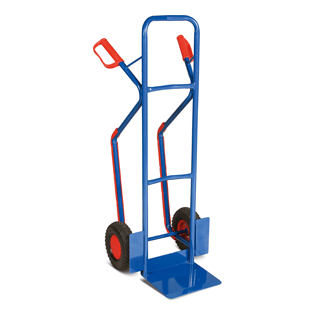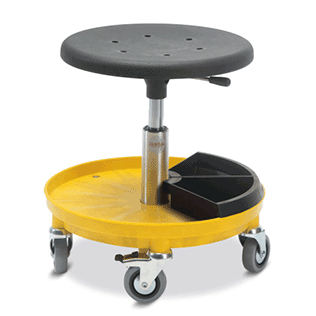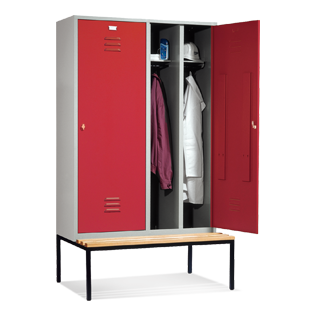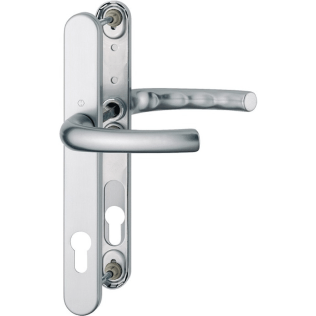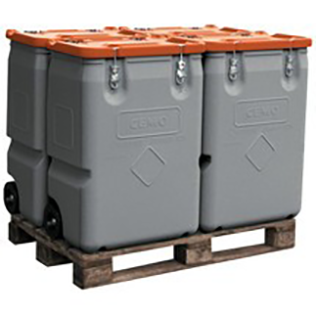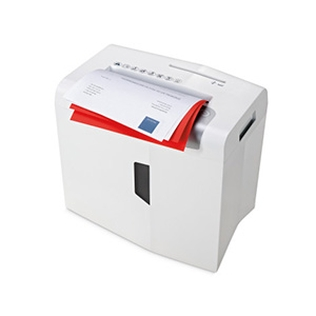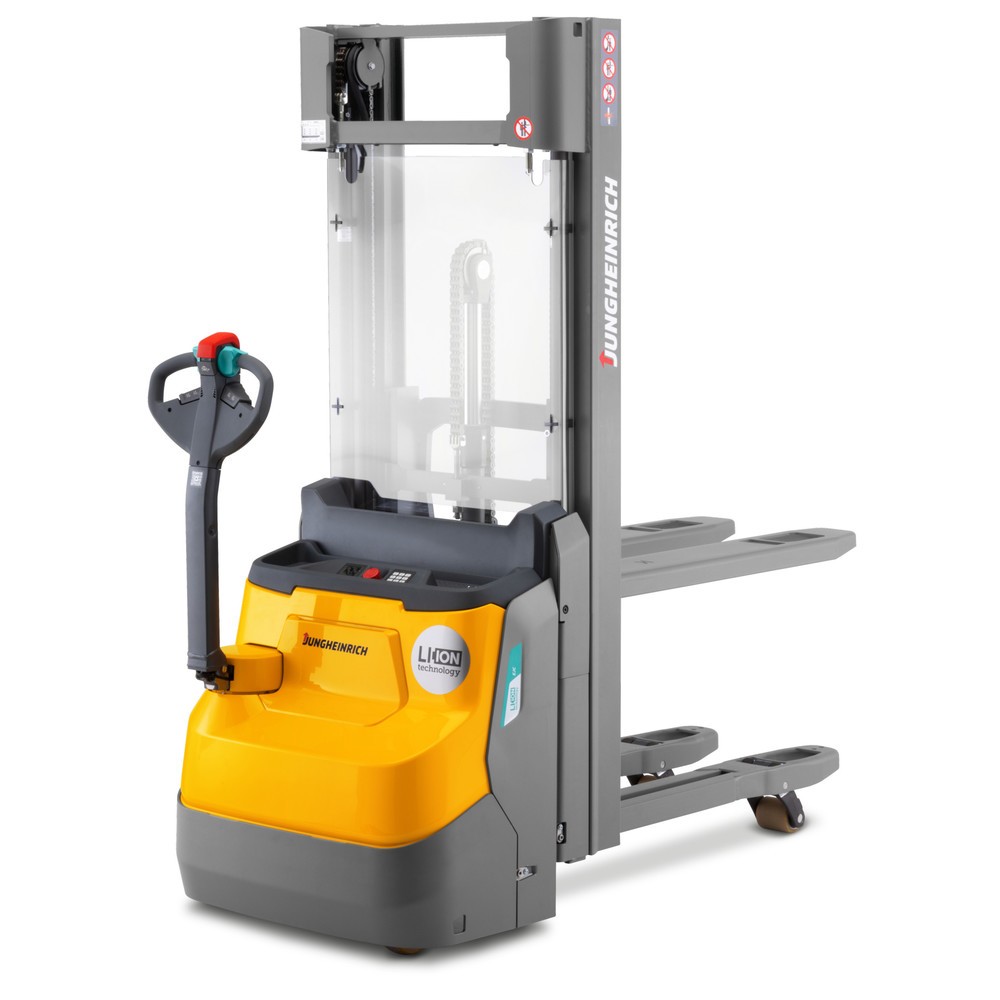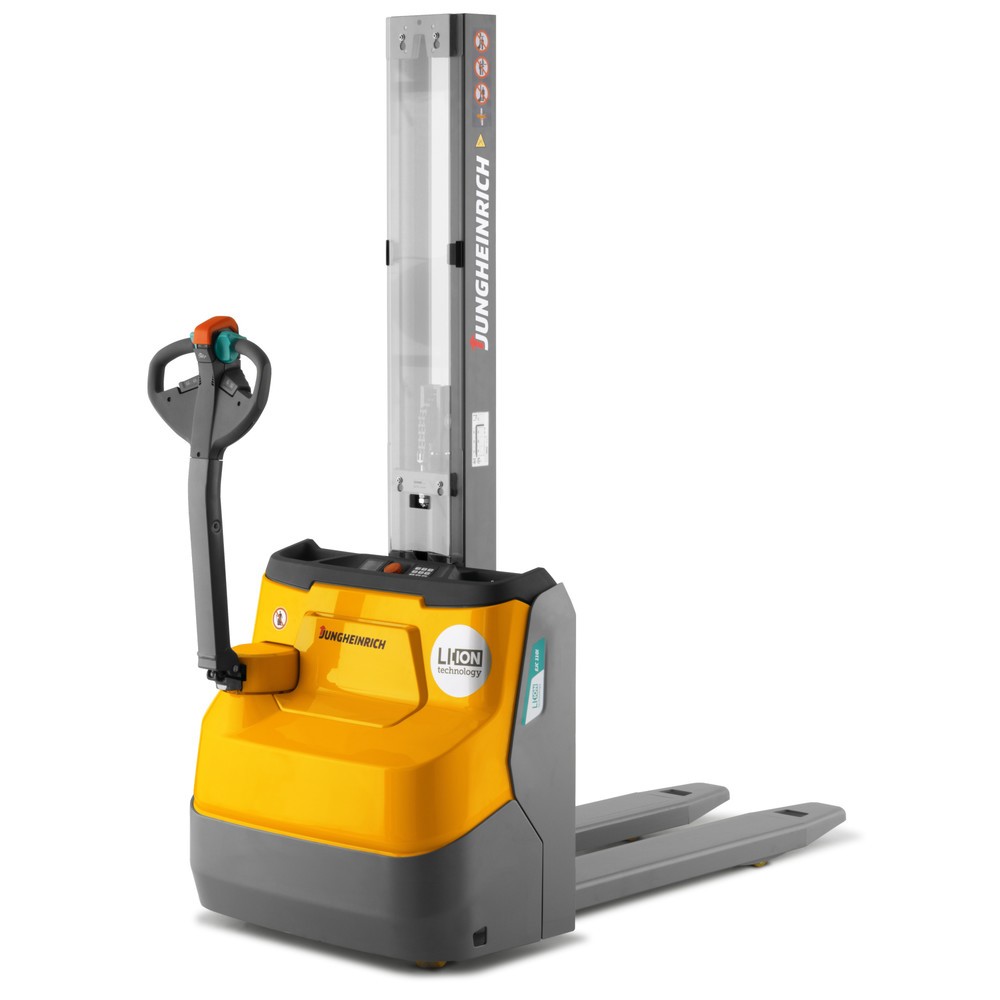Stacker trucks for businesses, warehouses, and logistics
Stacker trucks transport pallets and other loads that must be lifted from underneath, not only from one place to another, but also vertically. Depending on the model, manual or electric stacker trucks are also suitable for loading and unloading trucks and for storing and retrieving goods in warehouse racks. In our buyer's guide, we’ll give you more information about the advantages of the different types of stacker lift trucks, helping you to find the right product for your needs.
1. What is a stacker truck?

High lift trucks are wheel-assisted industrial trucks that not only transport goods horizontally, but also store and retrieve them at heights of up to several metres. With classic hand pallet trucks or low-lift trucks, load carriers can only be lifted off the ground and transported horizontally. For vertical transport, stacker trucks are available with different types of masts, which offer different lifting capacities and maximum lifting heights. In contrast to forklifts, pallet stacker trucks do not need a counterweight, as the load's centre of gravity is located inside the fork structure. This makes them very manoeuvrable and allows use in warehouses with narrow working aisle widths.
2. How to choose the right stacker truck
To find the right high lift truck model for your needs, you need to determine the requirements of your working environment. The best way to create a detailed requirements profile is by answering the following questions:
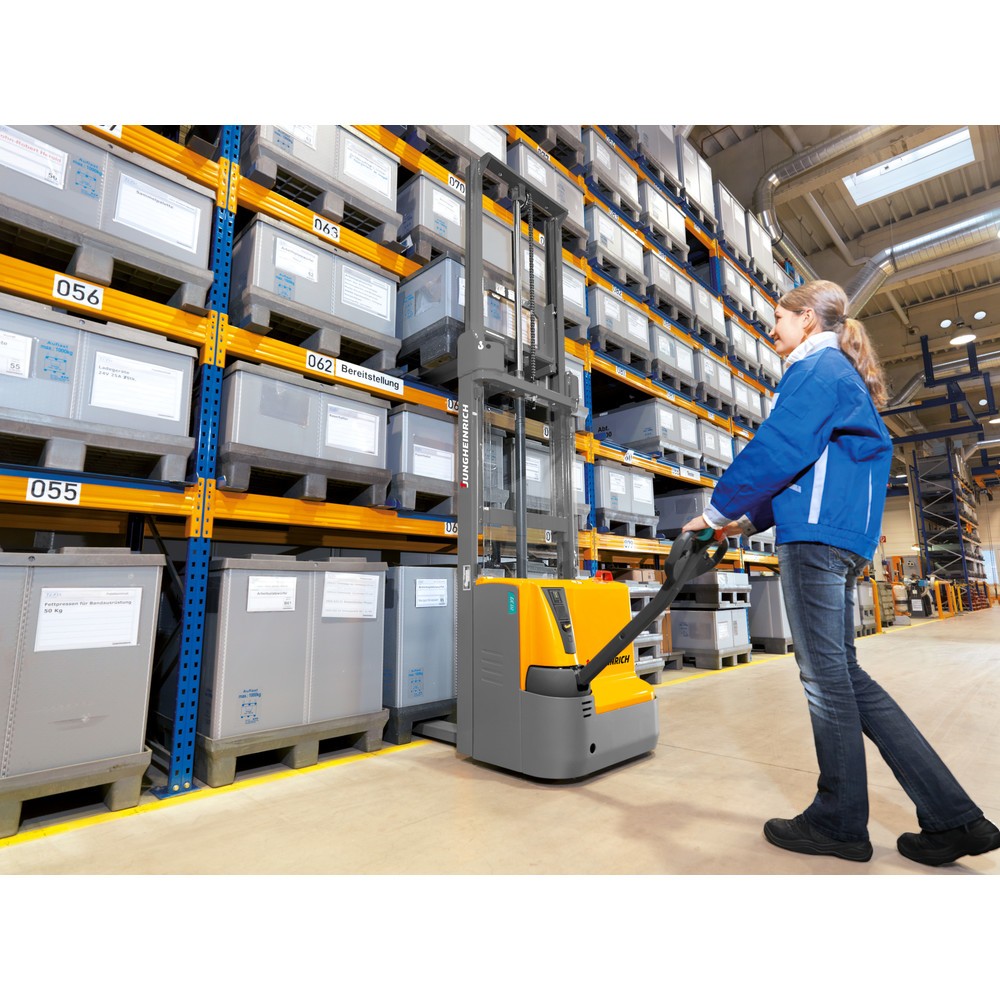
- Where will the high reach stacker truck be used most often?
- What tasks will the industrial truck perform?
- Which drive is required for the driving and lifting function?
- At what heights do goods have to be stored and retrieved?
- What is the maximum load weight to be carried?
- What fork length and width is required?
- What type of load is to be moved with the truck?
- Which tyres are suitable for the surfaces that the device will travel on?
- What special features of the storage areas need to be considered?
You can also use the following selection parameters to determine which truck is right for your needs.
Use
In general, high lift trucks are ideal for indoor use. They operate emission-free and can be moved easily on flat, smooth floors. Depending on the area of use, different types of stacker trucks may be suitable, as you can see from the table below.
| Use | Examples | Suitable stacker |
|---|---|---|
|
|
|
|
|
|
|
|
|
|
|
|
|
|
|
|
|
|
|
|
|
|
|
|
Drive
The drive determines the way a manual or electric pallet stacker truck can be operated during horizontal transport, vertical stacking, and retrieval:
- Manual drive: Manual stacker trucks are operated solely by the operative’s physical strength and are recommended for short transport distances. We supply high lift trucks with hydraulic cylinders and greater load capacity. With hydraulic stackers, manual pumping activates the hydraulic pump and power is transmitted by means of a hydraulic cylinder with linear movement.
- Semi-electric drive: Semi- electric high lift pallet stackers are also more suitable for short distances, as the battery only supports the lifting work. Loads are lifted and lowered electrically with the help of the lifting motor in a power-saving manner. The stacker is moved manually. These models are suitable for occasional stacking operations up to 3000mm lifting heights.
- All-electric drive: Trucks with this type of drive have a lift motor and a drive motor. Both are supplied with energy via the vehicle battery. This allows the truck to be moved easily and with low power consumption. Loads can be raised and lowered electrically with this device. We recommend all-electric stacker trucks for longer transport distances and continuous lifting processes, as well as stacking and unstacking loads at heights.
This video shows you the main differences between hydraulic and electric stacker trucks:
Lifting height
One of the most important selection criteria of a pallet stacker truck from Jungheinrich PROFISHOP is the lifting height. This determines the maximum height to which you can lift pallets and other load carriers. When using stacker trucks indoors, however, there are other parameters to consider, including the following:
| Parameter | Meaning |
|---|---|
| Lifting mast overall height |
The overall height is the maximum height of an industrial truck measured from the ground. However, it can change for industrial trucks with high lift equipment - depending on whether the mast is retracted or extended. |
| Maximum lift height |
This is the measure of the greatest possible distance from the ground to the highest position of the load handling attachment (e.g. the top edge of the fork or platform) when the load carrier is raised. |
| Free lift |
This refers to the lifting height up to which the load handling attachment can move upwards without changing the overall height of the mast. The free lift function is ideal when low doorways have to be taken into account or when stacking has to be carried out at low ceiling heights, e.g. in containers, closed railway goods wagons or basements. |
Stacker trucks in our range are available with different mast types, but the functional principle is the same for all models. The lift carriage with the fork and the load is moved vertically within the stand mast or lift mast by a motor (semi- and fully electric stackers), or hydraulically (hydraulic stackers). On some models, the mast can be telescopically extended two or even three times. In this way, much higher storage spaces can be reached without restricting mobility in lower working areas. You can find more information on this in our guide to stacker and pallet truck dimensions.
Rated capacity (load capacity)
The weight-specific limit with which a high reach stacker can be loaded is referred to as the load capacity or rated capacity. This must not be exceeded in order not to overload the load-bearing parts of the truck and jeopardise safe handling. The load capacity diagram, which can be seen on electric and hydraulic stacker trucks, shows how the rated load capacity depends on the lifting height and centre of gravity of the load.
The residual load capacity must also be considered. If, for example, attachments are used on the high lift truck, the general load capacity is reduced because the load centre of gravity also changes. You can find more information in our guide to the carrying capacity for industrial trucks.
Load

All stacker trucks available in our range are suitable for picking up standardised Euro pallets. Pallets in special sizes, however, can be picked up with our wide-gauge electric and hydraulic stacker trucks. With pallet stackers in a wide-gauge design, it is also possible to pick up Euro pallets crossways. The special feature here is that, due to the laterally extended wheel arms and the forks that can be lowered to the ground, the wide-track truck drives underneath the load unit when picking up the load. This means that Euro pallets or even closed pallets can be picked up. In addition, it is also possible to use these trucks to move boxes, transport crates or mesh trolleys, as well as collection trays that have pockets suitable for industrial trucks. To ensure that delicate goods such as glassware, electronic components or other sensitive items are not damaged during loading and unloading, we also offer trucks with proportional hydraulics. These are integrated into the tiller, enabling sensitive lifting and lowering.
Tyres
Stacker trucks from Jungheinrich PROFISHOP all have a four-point chassis.
Manual trucks always have two swivel wheels and are also equipped with single or tandem load rollers. Tandem rollers are particularly suitable for uneven floors or if you must overcome speed bumps in your warehouse. They also do not wear as quickly as single fork rollers and can stabilise the load better.
Electric pallet stacker trucks have a drive wheel, a support wheel and single or tandem load rollers.
The castor material most suitable for your high lift truck depends on the operating and physical conditions of the working environment. Factors to consider include:

- Load capacity of the floor
- Floor condition (paved/unpaved, degree of contamination, floor covering)
- Floor slope
- Noise level
- Hygiene requirements
- Climatic conditions
- Starting and rolling resistance
- Impact load
- Environmental influences such as chemicals, oils, or moisture
- Ambient temperature
- Electrical conductivity requirements
| Tyre material | Field of application | Properties |
|---|---|---|
| Nylon |
|
|
| Polyurethane |
|
|
| Rubber |
|
|
Pedestrian or ride-on operation
We stock pallet stacker trucks that are designed for pure pedestrian operation. However, models that enable ride-on operation are also available on request.
- High lift truck for pedestrian operation: With all pedestrian models, the industrial truck is controlled via an ergonomic multi-function tiller. This allows you to comfortably control the transport speed, steering, as well as lifting and lowering, while accompanying the truck on foot.
- High lift truck with combined pedestrian/passenger operation: With these models, the driver can comfortably ride along on a fold-out platform, making these trucks suitable for use on longer routes. Additional grab rails provide further safety. However, you may need a licence to operate these types of trucks with platforms. These models are only available on request.
- High lift truck with driver's stand Also available on request, we can supply vehicles with an integrated driver's stand where the driver can sit or stand. You may also need a special licence for these kinds of vehicles.
3. What types of stacker trucks are there and what advantages do they offer?
At Jungheinrich PROFISHOP you can buy stacker trucks in various designs:

Our compact and manoeuvrable hydraulic stacker lift trucks are specially adapted to narrow warehouse aisles. These trucks can be used to transport and stack loads up to 1500kg. The movement of the truck is purely manual, with manual lifting work supported by hydraulic cylinders that offer variable lift. With these hydraulic stacker truck models, you can transport loads over shorter distances and store them at heights of up to 3m.
| Advantages | Disadvantages | |
|---|---|---|
|
|
Electric stacker trucks
For heavy daily work requirements, longer transport distances and intensive work intervals, our robust electric stacker trucks are more suitable. Due to the range of functions and performance, these stackers are more efficient than manual models. Electric trucks have one or two motors, depending on the model:
- In semi-electric models, loads are stacked and retrieved at heights of up to 3570mm with the help of a powerful lifting motor. The time-consuming pumping work on the tiller or by pedal is no longer necessary.
- In addition to the lift motor, fully electric stacker trucks also have an electrically driven motor. This also takes over the forward and reverse movement of the truck. This allows you to transport loads effortlessly over longer distances in the warehouse.
Both motors are powered by a battery. The operating time of an electric pallet truck depends on the performance of the battery, which must be charged regularly. If a lead-acid battery is the energy source, demineralised water must also be refilled regularly.
| Advantages | Disadvantages | |
|---|---|---|
|
|
4. FAQs for stacker trucks
When transporting loads with a high reach truck, you should always watch out for moving or tipping loads. This is especially important when driving the equipment over uneven ground or on bends. Machine operators are responsible for avoiding accidents with other people. Likewise, you must ensure the stability of the load before lifting or lowering. Also, remember never to overload the industrial truck.
If your stacker truck is a pedestrian operated device, you do not need a forklift driving licence. However, employers must train employees who will be working with the industrial trucks on occupational health and safety aspects. All operators should be given the opportunity to learn the correct handling of a stacker truck and to be able to apply all safety regulations.
An exception is a stacker truck that has a ride-on feature, for example in the form of a folding platform.
To prevent accidents at work, all operators of stacker trucks are required to check the vehicle before starting work. A visual inspection should include the brake system, the lifting device, wheels and electrics. Furthermore, you should make sure that the tiller can be moved properly in all directions. Leaking fluids are also a warning sign of a defect.
In addition to the visual inspection, every truck must go through a thorough examination at least once a year according to the Lifting Operations and Lifting Equipment Regulations 1998 (LOLER). However, LOLER 98 makes it clear that depending on the type of truck and its use, inspections may need to be more frequent than this.









